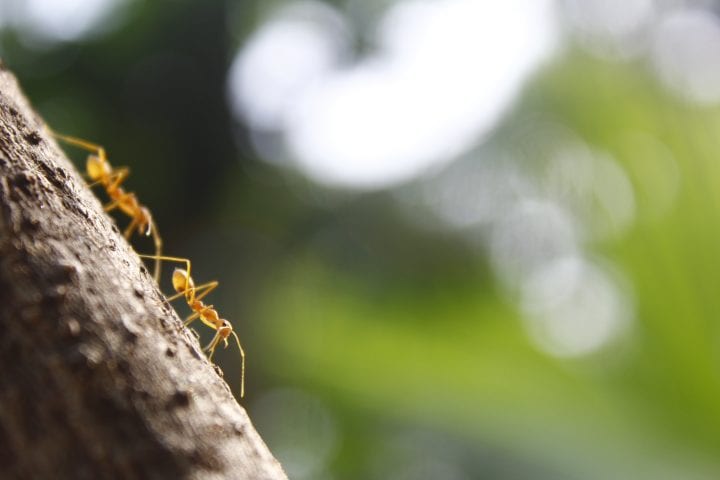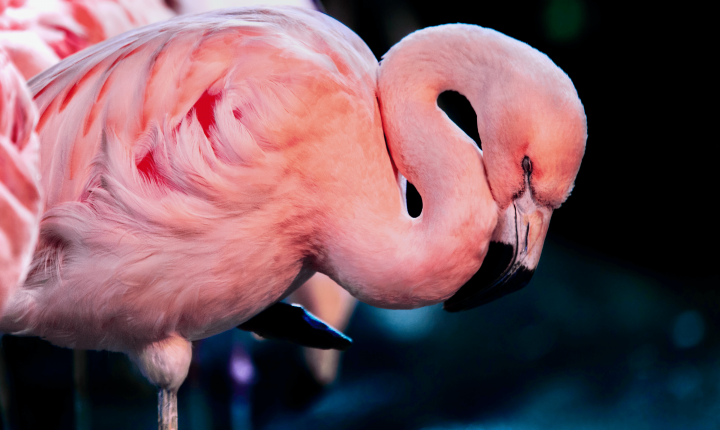Long before the strain of the COVID pandemic, the writing was on the wall about modern life's impact on mental health. But we're not the first species to face stress. See what we can learn from our neighbors.
Nature is always hinting at us. It hints over and over again. And suddenly, we take the hint.Robert Frost
Imagine you’re a bite-sized snowshoe hare racing around the hinterland doing your best to avoid being eaten by a lynx. Life is far from carefree but you’re healthy and aside from having had to reduce your litter size, life is good.
How is it that a hare appears able to cope with the stressors of its daily life (predation, starvation, reproduction) while we humans, with our seemingly easier, domesticated lifestyles, develop ulcers, heart disease, hypertension, central nervous disorders, and debilitating levels of depression?
The short answer is that different kinds of stressors cause different kind of stress responses. There’s a large difference between episodic stress––the kind a hare periodically experiences when chased by a predator, and chronic stress––the sort we experience when relentlessly worrying about making ends meet.
A few years ago, a large and presumably stressed-out audience of readers sent Robert Sapolsky’s book Why Zebras Don’t Get Ulcers to the best-seller list. In it, the Stanford neurology professor highlighted how, unlike humans, most wild animals don’t seem to suffer from chronic stress. Such a harmful maladaptive physiological response would simply not be selected for throughout evolution.
Acute episodic stress is another story. It’s actually beneficial. It sparks up the sympathetic nervous system, triggers the fight or flight response, and readies the body for action by increasing blood pressure and heart and respiration rates. It’s a complex process that stimulates our s to secrete stress s like cortisol directly into our bloodstream.
Cortisol has myriad functions from improving memory and bolstering the immune system to lowering sensitivity to pain. In some lab studies, an acute stress response has even been shown to increase the number of neurons in teenage rats.
This beneficial side of stress has been noted for decades. Hans Selye, the scientist who first coined the term stress back in the 1930s, describes the stress response as “the general syndrome.”
Evolutionary medicine expert Randolph Nesse proposed that this adaptive stress response likely evolved under a physically demanding external environment (think: avoiding wild animal attacks). Today, in contrast, many of our threats are internal and psychological in nature. They’re not due as much to our inability to meet the challenges of the environment, but to our inability to meet our own desires.

Starlings, too, seem to manage stress somewhat unexpectedly. When subjected to chronic stress from predator calls and decoys in the lab, their stress hormone levels actually decreased. For us as humans, simply watching their graceful murmurations may help decrease any stress hormones we're producing right now.
Our capacity to manage this new kind of long-term stress is very personal and basically in our heads––which is not to say “unreal” in the slightest. When something we care about is at stake, the way we contextualize it in our minds powerfully impacts our bodies’ response. What becomes a debilitatingly chronic stressor in one person (for example a disagreeable family member), may merely be an ignorable annoyance or helpful motivator to another person. A negative attitude goes hand in hand with high cortisol levels and persistently high cortisol can weaken the immune system, raise blood pressure, and cause hypertension, heart attacks, and even death. A 2013 American Institute of Stress report claims chronic stress costs the U.S. economy more than $300 billion per year in problems related to productivity loss, absenteeism, employee turnover, accidents, and insurance costs.
The degree to which non-human vertebrate animals wrestle with what Nesse called “what they desire and what they actually have” is not well understood. As far as chronic stress is concerned, we do know that laboratory and captive zoo animals suffer from it (think: lab rats being immobilized and tigers pacing in cages). And we’ve learned details surrounding the underlying mechanisms. Applying these findings to wild populations, however, comes with a host of added complications. Studies of social ranking in baboons, for example, showed that unexpectedly, both alpha males and low-status members had higher levels of stress hormones than their middle-ranking members.
Looking across the board, studies of chronic stress in wild animal populations present mixed results and comparing between studies is challenging. As another example, in free-living European starlings subjected to chronic stress from such methods as predator calls and decoys, stress hormone levels decreased instead of rose. It turns out stress hormones can vary dramatically depending a number of factors: the species, type of tissue sampled (plasma, feces, hair, feathers), how the sample was treated (frozen vs. fixed), the time of day and season of sampling, and the subjects’ gender, reproductive status, and overall life history traits.
It may be that some wild animal populations are just better at being little Zen masters transforming potential demons into something less damaging to their fitness, but such answers are yet to come. Something researchers do agree upon is that glucosteroids and stress hormones as a whole are only one part of the panoply of stress responses that need to be examined to reach a fuller understanding.
When comparing non-humans to ourselves, one rather obvious and perhaps underappreciated difference is the fact that they live in the great outdoors. The vast majority of humans spend 90% of our day inside. By doing so, we may be protected from predators and harsh weather, but we’re also depriving ourselves of the wealth of health benefits that outdoor sunlight, sky, fresh air, soil, water, smells, and sounds can offer.
For example, sunlight plays a large role in our eyeball development. With insufficient exposure, our eyeballs grow longer making us susceptible to nearsightedness. Sunlight, in non-cancerous amounts, raises vitamin D production and serotonin levels which positively boost the mood. When we walk in a forest, we can breathe in airborne essential oils released from the trees called phytoncides that can increase our numbers of natural killer cells––a type of white blood cell that can bolster responses to tumors and viruses. Being outdoors in a biodiverse environment can also positively impact our microbiota and resistance to allergenic substances. Listening to natural sounds like birdsong or moving water can increase our ability to rebound from stressful events and surgeries. Living near blue spaces and spending time in and near water has also been correlated with increased longevity.
The simple act of looking at natural-world scenery can relax and restore our concentration as mentioned in the oft-cited literature surrounding Attention Restoration Theory (ART) published by Kaplan and Kaplan in 1989. In light of the dearth of outdoor time, countries like Japan, Korea, and increasingly the U.S., have been cultivating the practice of forest-bathing (shinrin yoku) as a form of chronic stress relief. Shinrin yoku involves mindfully walking through forests and green spaces and letting your mind wander, zone out, relax, and appreciate the larger natural world around you. Since 2004, Japan has also invested millions of dollars in forest therapy research and other countries are following suit there as well.
Unfortunately, for many populations confined to the indoors due to illness, infirmity or criminal incarceration, such outdoor practices are simply not possible. In these cases, digital nature assets such as recorded videos and soundtracks can offer substitutes. Twenty-four-hour nature channels are also becoming more commonplace in assisted living centers and hospitals. Our research group, led by Dr. Nalini Nadkarni at the University of Utah, has found that providing nature videos to solitary confinement inmates even for an hour a day, lowered discipline referrals rates by 26% over the course of a year. These findings have encouraged corrections institutions across the U.S. to consider adopting similar technological nature offerings.
These populations don’t have the option of going outdoors. For the rest of us, why not take advantage of the natural resources afforded our wild animal kin, and when feeling stressed out, take a step outside? Since the harmful impacts of our stressors rely so heavily on our own mindset perhaps when we feel our stress response coming on, we could rethink of it as an ancient call from the natural world to reconnect. Study after study shows how looking out on our planet’s green and blue spaces, getting some sunshine on our skin, breathing fresh air into our lungs, and feeling soil or sand under our feet can act as a universal therapist. Stepping outside can offer us a world of good––an ancient world we once knew well and would do well to know once again.
Tierney Thys is a National Geographic Explorer, Research Associate at the California Academy of Sciences, biologist, and filmmaker. Her work bridges the worlds of primary research and science communication to promote environmental understanding and stewardship. She is a mom of two, land and sea private pilot, MasterSCUBA diver, and trail runner. She served on the boards of the TED Braintrust and Revive and Restore and currently serves on the boards of Think Beyond Plastic, Plastic Pollution Coalition, and SciAll.org.










